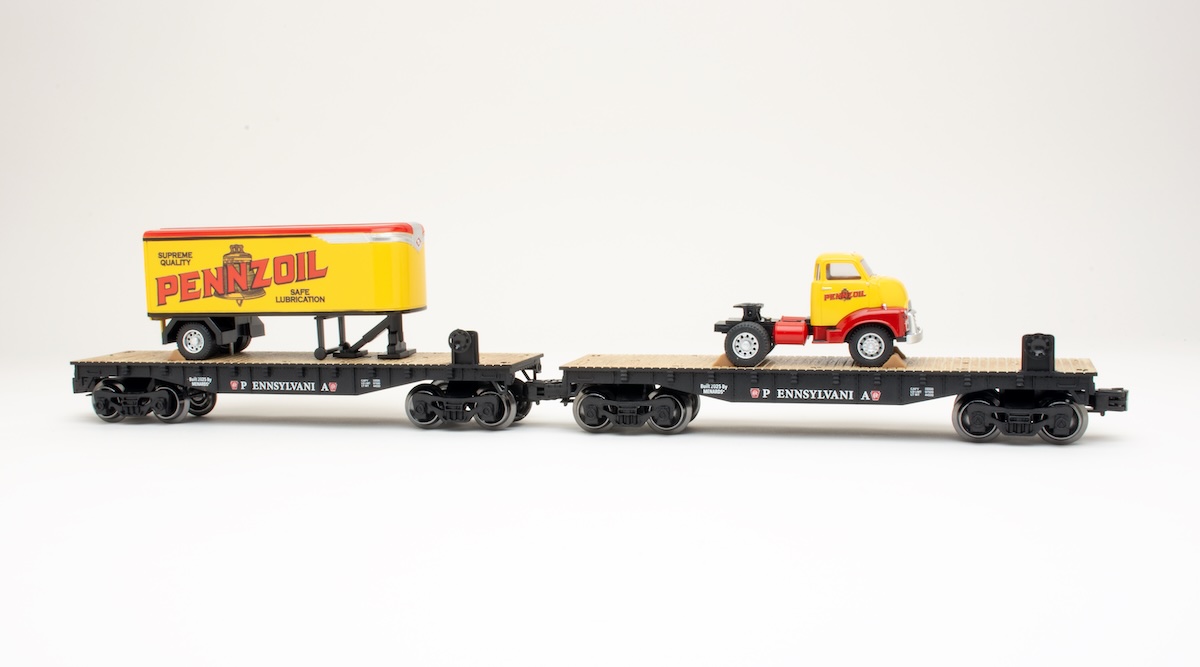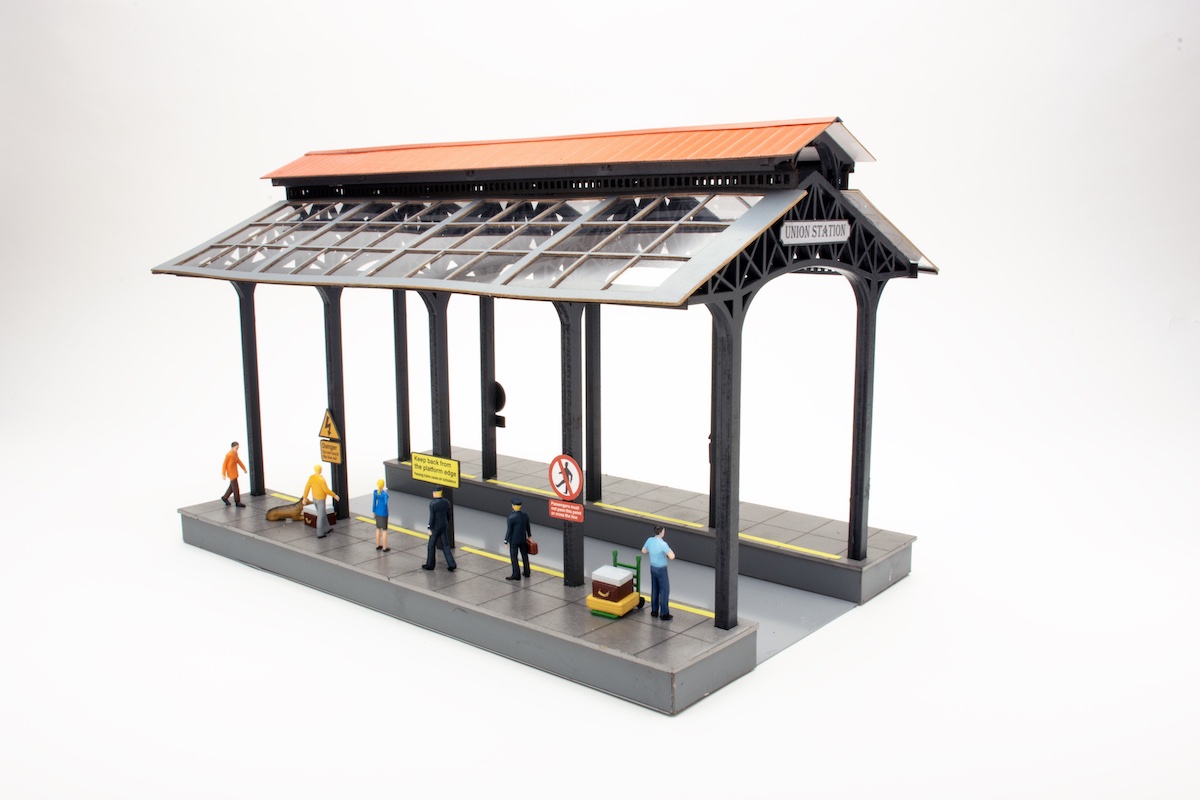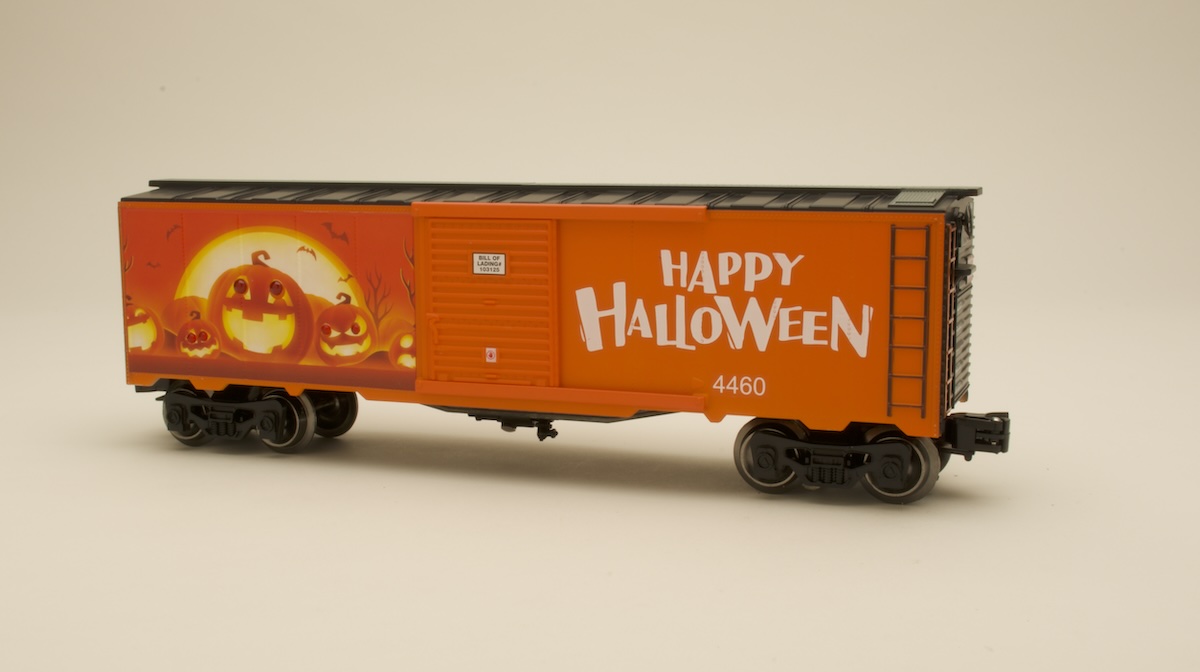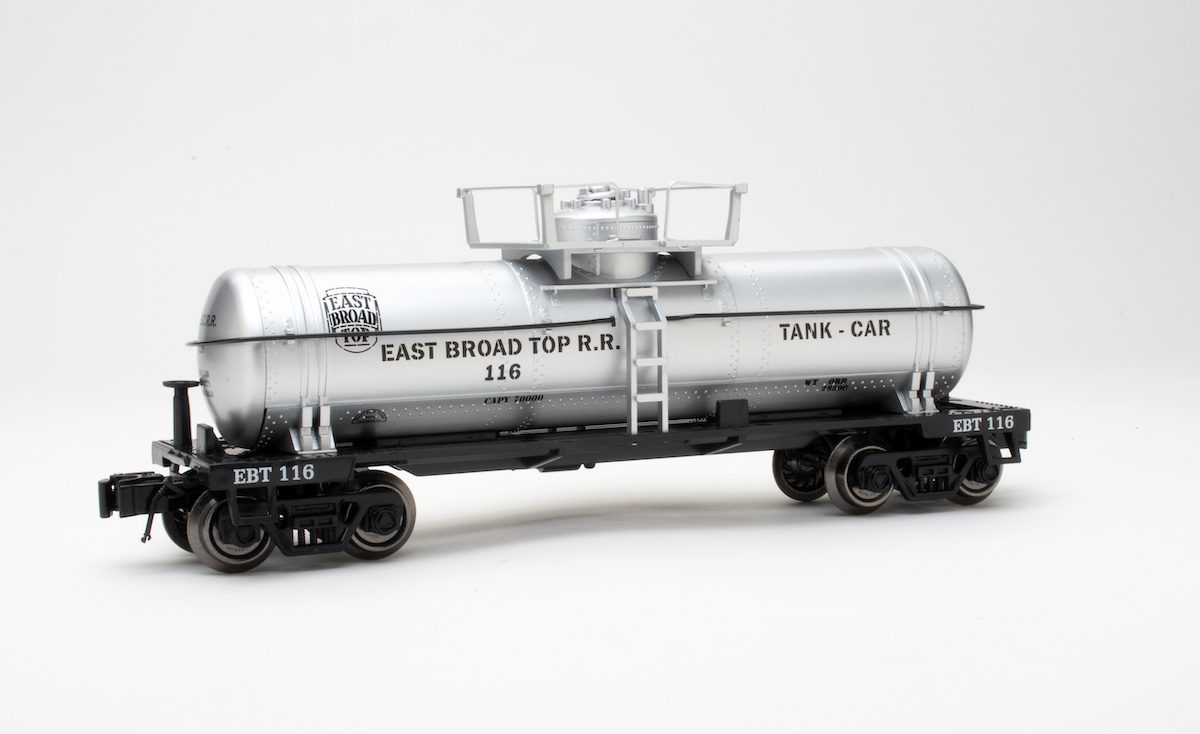This in turn begat security trains to escort (or even pull) military cargos. They ran from elaborately armored locomotives and guns to regular engines pulling flatcars and gondolas equipped with cannon, tanks, and anti-aircraft guns. But even in the era of atomic bombs and cruise missiles, this isn’t a dead concept. Armored trains have been used in the Balkan Wars of the 1990s and by Russia in the Second Chechen War.
Turn the clock back to 1917. The Kaiser of Germany and his Central Powers posse were in the third year of slugging it out with the Triple Entente for control of Europe. Railway guns and armored trains were scattered from Russia to France. After years of pondering whether or not to get involved, the U.S. entered the fray.
Lionel jumped on the bandwagon with an O gauge military train of its own: the Armored Train, featuring what Lionel dubbed an armored “motor car.”
The catalog copy read: “PLAY WAR! Bring up the siege guns on tracks!” And Lionel’s 1917 catalog featured three items to catch the eyes of every pint-sized Pershing: the no. 213 Armored Motor Car (Lionel assigned it the code word “Liberty”) for $5; the no. 214 Armored Motor Car outfit (code word “Victory”) featuring a no. 203 armored car and two no. 900 ammunition cars for $6.50; and the no. 215 Armored Car outfit (code word “Glory”) featuring a 203 armored car and two no. 702 supply cars for $8.
In today’s dollars, the motor car would cost about $90 and the two sets between $120 and $150 each. Depending on your source, the average wage in 1917 was around $750 a year (or about $14 a week), so those Lionel items were not inexpensive almost a century ago.
The outfits were available through 1921, and they could be said to have inspired a Marx Army train in the years before World War II. And dare we mention the space and military toys from the 1950s? If the Kaiser had only known the U.S. would end up with total toy train dominance, he might have let the Austrians sort out
their problems on their own!
Opening the box
I have never seen the real deal in anything close to mint condition. The motorized units and cars I’ve viewed looked like what they were: beloved playthings that had been used to defeat whatever foes a child’s mind could envision. Chips, dents, faded paint, maybe a missing coupler, or a barrel that had been misplaced.
Opening the first of the boxes of this O gauge reissue in the Lionel Corp. Tinplate line from MTH was a “wow” moment. These are not any sort of modern, scale-like product. They’re re-creations of simple toys from a simpler time, and the outfit is beautifully crafted. It was the simplicity of design and the quality of the execution of the product that caught my attention.
All the equipment is stamped sheet metal. The metal was smooth, save for where there was supposed to be detailing texture rising from it. I’m not sure it could have been made any better back in 1917.
The motor car has seam detailing running around the bottom of the shell. Stamped-in rivet detailing is found around the simulated door, over the vents, and at the seams of the control compartment. There are louvers on the front and rear.
The turret features two fixed (non-moving) gun barrels. The turret, however, can be rotated 360 degrees using your Mark I fingers. Running with the barrels slightly rotated toward the side of the right-of-way makes the car look like it is searching for out-of-scale partisans to blast back to their HO land!
The two no. 900 ammunition cars are as simple as simple gets. They have black stamped-metal frames mounted on two single axles for a four-wheeled car. The carbody is a separate piece (actually two pieces, counting the slightly peaked roof). The sides have embossed detail that simulates either seams in a boxcar or side supports. There’s no detailing on the ends, but the roof does have a stamp-formed roofwalk. The cars also have opening doors mounted on the inside rather than outside, which is more common.
The olive drab paint was applied flawlessly to the motorized unit and the railcars. The finish is a high-gloss reflective surface and it looks sharp!
On the test track
This O gauge motor car is a pretty uncomplicated model. It has a big old motor with big old gears and no traction tires. The wheels are not scale, nor are they supposed to be. This model is as old school as a McGuffey reader. It is a traditional gizmo without any glitz. It simply gets the job done. This alone has great appeal to me.
There’s no smoke unit (perhaps having one would be useful for a war train – helping to generate the fog of war and all that).
There’s no sound system so you’ll you need to make the explosion sounds yourself – hey, you were 8 once, so I’m sure you remember how.
Coil couplers? Forget those. The units all have really old, old-time hook-ups! They are very secure, by the way.
The big feature is that what it can do is limited only by your imagination. Just like a kid did almost 100 years ago. So using it to protect your trains from Bavarian infantry, dinosaurs, or flying monkeys on the Oz branch is totally jake with me.
Our conventional low-speed average was 6.9 scale miles per hour, while the high-speed average was 136.
Drawbar pull was 5.4 ounces.
While this O gauge outfit won’t appeal to all (too vintage, too simple, or too warlike), it packs more nostalgia than a platoon of Doughboys, and probably looks unlike anything else on your layout. This tinplate armored train does not attempt to re-create the prototype in miniature. It does, however, re-create tabletop fun from the youth of our hobby. – Bob Keller
Features: Traditional motor, two no. 900 ammunition cars, conventional operation, stamped-steel construction. Additional no. 900 ammunition cars (11-70078) are available for $59.95 each.















Thanks for noticing Bruce. This is both CTT's latest project layout and it replaces my old, trusty, tried and true test track (that, by-the-way, had been my original benchwork for the layout I had when I got back into O gauge in the early 90s).
That is a cool train set. I almost forgot about it. But what makes it so good is the layout it was running on. I hope you'll use that layout when you review future trains for your magazine. Bob great job.
I'm sorry, thought I made it clear bit I guess it got edited out – this was made like the pre-reverse unit original.
No mention made if this has reverse.
I assume not, but imagine most would like to know.